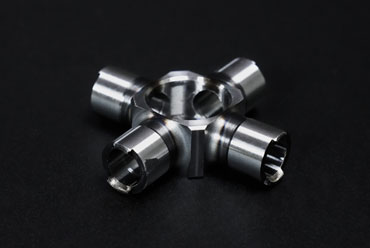
Steel Forging
Steel forging is a traditional forming process that involves placing a steel billet heated to a plastic state in a forging mould and applying intense pressure to cause it to deform and obtain parts of the desired shape. Steel's high melting point and hardness make the forging process more challenging and give steel forgings unique properties.
The density of steel forging is higher than that of aluminium, which means that under the same volume, steel forging can provide stronger rigidity and load-bearing capacity. The lattice structure of steel is stable and not easy to deform at high temperatures, which makes steel forging have excellent high-temperature resistance. After forging, the grain structure of steel is refined and internal defects are reduced, improving the material's strength, toughness, and life.
Compared with aluminium forging, steel forging is more suitable for parts that must bear high loads and resist wear and corrosion. For example, in the automotive industry, key components such as crankshafts and connecting rods are often forged from steel. Steel forging is widely used in engineering machinery to manufacture wear-resistant parts such as gears and bearings.
Steel forging is a traditional process that can produce high-strength, wear-resistant, and high-temperature resistant parts. Although aluminium forging has advantages in lightweight, steel forging performs better in load-bearing capacity, wear resistance, etc., and still occupies an important position in many industries. Welcome to Tung Shuhn Precision, the best custom steel forging factory in Taiwan.
